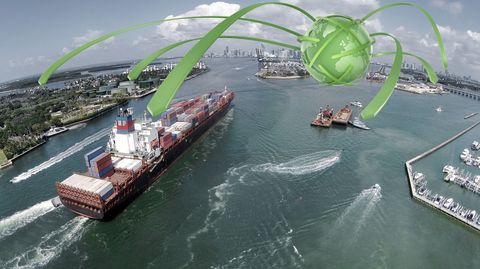In January 2017, newly inaugurated president Donald Trump confirmed that the US would be pulling out of the Trans-Pacific Partnership (TPP), a multilateral 12-country free trade agreement (FTA) that was set to be the biggest of its kind. It had taken more than a decade for the deal to be finalized in February 2016; less than a year later, its most prominent backer had pulled out, and it was widely assumed that TPP was effectively dead.
Skip forward a few months, however, and it would appear that the obituaries for TPP may have been premature. While the protectionist rhetoric coming from Trump's America has not abated, the remaining 11 member countries - Australia, Brunei, Canada, Chile, Japan, Malaysia, Mexico, New Zealand, Peru, Singapore and Vietnam - have defied expectations by maintaining their commitment to pushing the deal through, even without US involvement.
Subsequently, a report has been issued by the Canada West Foundation suggesting that TPP could still be a significant boon for global trade, even without the participation of the world's largest economy - and that for some countries and sectors, the impact of the new-look TPP11 deal may in fact be more pronounced that the original TPP12 incarnation.
The overall benefits
The most important takeaway from the Canada West Foundation is the overall view that continuing with TPP would represent a worthwhile venture for the remaining 11 countries without the presence of the US - even though better American trade links were once presented as being the deal's biggest attraction.
According to the analysis, TPP11 would generate an increase of 2.43 per cent in exports among partners - a not-insignificant improvement, albeit one that is only around 40 per cent of what was expected under the original deal.
Meanwhile, real GDP within the bloc would tick upwards by around 0.074 per cent, while total exports from TP11 nations to the rest of the world would be expected to rise by 0.23 per cent - potentially even more, if US firms decide to relocate to Canada or Mexico to take advantage of access to TPP11 markets.
The biggest beneficiaries
Of all the remaining TPP members, it is those in the Americas - Mexico, Canada, Peru and Chile - that would see the greatest benefit from a TPP11 deal compared to the original TPP12 plan, as these countries would avoid erosion of existing preferences in the US market and would no longer have to compete with US suppliers.
Mexico would be the single biggest beneficiary, turning an expected GDP gain of 0.008 per cent under TPP12 into a 0.157 per cent improvement under TPP11, while Canada would see the second-most pronounced gains, with its agriculture sector in particular ending up much better off, thanks to preferential access to opportunities in Asian nations such as Japan.
Report co-author Carlo Dade, director of the Trade & Investment Centre, said: "Moving ahead with a TPP11 is clearly in Canada’s economic self interest. In an era of Trump, this is a way to turn threatened losses into gains."
Additionally, Singapore would avoid losing its existing preferential position in Asian markets to the US, meaning it would also stand to gain from its departure, while sector-based analysis indicated that the automotive, machinery and equipment, leather products, beef, processed foods, and fruit and vegetables industries would all be better off.
The biggest losers
However, not all countries remaining in TPP11 would experience the same gains from the US withdrawal. Vietnam and Japan were identified as the nations that stood to gain the most in the US market under TPP12, and would therefore see the biggest reduction of benefits, even though the net effect would still be positive.
This is because a switch to TPP11 would essentially wipe out the large export gains that Vietnam stood to make in textiles and apparel in the US market, though the textiles sector as a whole would nevertheless benefit from large gains in intra-TPP exports.
However, the biggest loser from the US withdrawal is likely to be the US itself, which would see a projected gain in exports to TPP countries of C$17.3 billion ($11.79 billion) turn into a C$4.1 billion (€2.8 billion) loss, as it would miss out on the numerous supply chain benefits of the multilateral agreement.
Future implications
Overall, the report painted a positive picture of the benefits of a TPP11 deal, even though policy challenges remain on a number of key issues - including investor-state dispute mechanisms, intellectual property and data regulations - before such an agreement can be struck.
The analysis also noted that the TPP11 bloc would need to negotiate a number of challenges pertaining to its future relationship with the US. Potentially, this could include the prospect of the superpower's potential future re-entry into the pact, informed by the losses it would otherwise suffer from President Trump's decision to opt out of it.
Co-author Dan Ciuriak, of Ciuriak Consulting, concluded: "A TPP11 is a viable deal and a ready-made response to any sort of protectionist wave coming out of the US."






